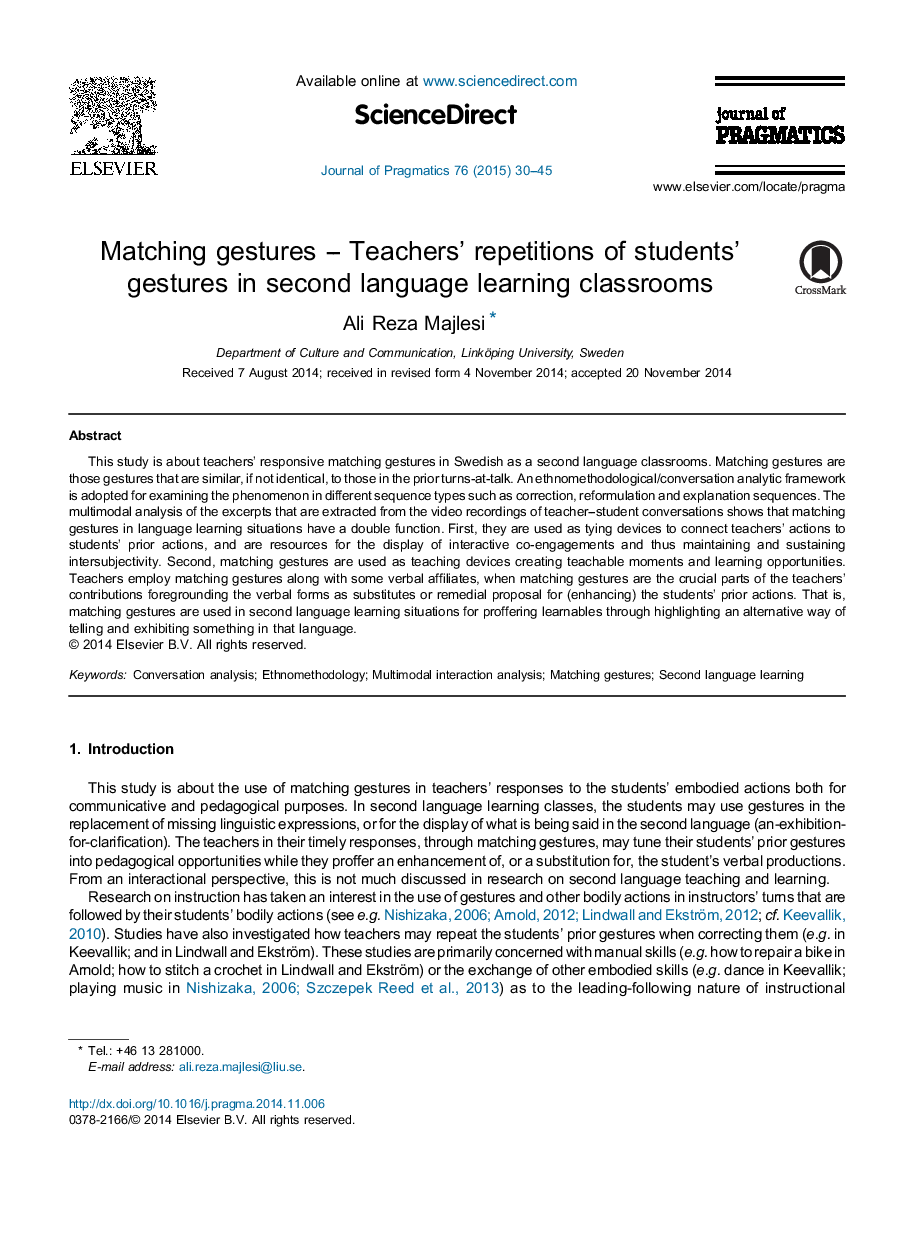| Article ID | Journal | Published Year | Pages | File Type |
|---|---|---|---|---|
| 932645 | Journal of Pragmatics | 2015 | 16 Pages |
•Using matching gestures is a recognizable and accountable action.•Using matching gestures show a heightened display of recipiency and co-participation.•Matching gestures are used to tie two subsequent actions.•Matching gestures are used to highlight learnables.•Matching gestures help to make teaching opportunities in second language classrooms.
This study is about teachers’ responsive matching gestures in Swedish as a second language classrooms. Matching gestures are those gestures that are similar, if not identical, to those in the prior turns-at-talk. An ethnomethodological/conversation analytic framework is adopted for examining the phenomenon in different sequence types such as correction, reformulation and explanation sequences. The multimodal analysis of the excerpts that are extracted from the video recordings of teacher–student conversations shows that matching gestures in language learning situations have a double function. First, they are used as tying devices to connect teachers’ actions to students’ prior actions, and are resources for the display of interactive co-engagements and thus maintaining and sustaining intersubjectivity. Second, matching gestures are used as teaching devices creating teachable moments and learning opportunities. Teachers employ matching gestures along with some verbal affiliates, when matching gestures are the crucial parts of the teachers’ contributions foregrounding the verbal forms as substitutes or remedial proposal for (enhancing) the students’ prior actions. That is, matching gestures are used in second language learning situations for proffering learnables through highlighting an alternative way of telling and exhibiting something in that language.
